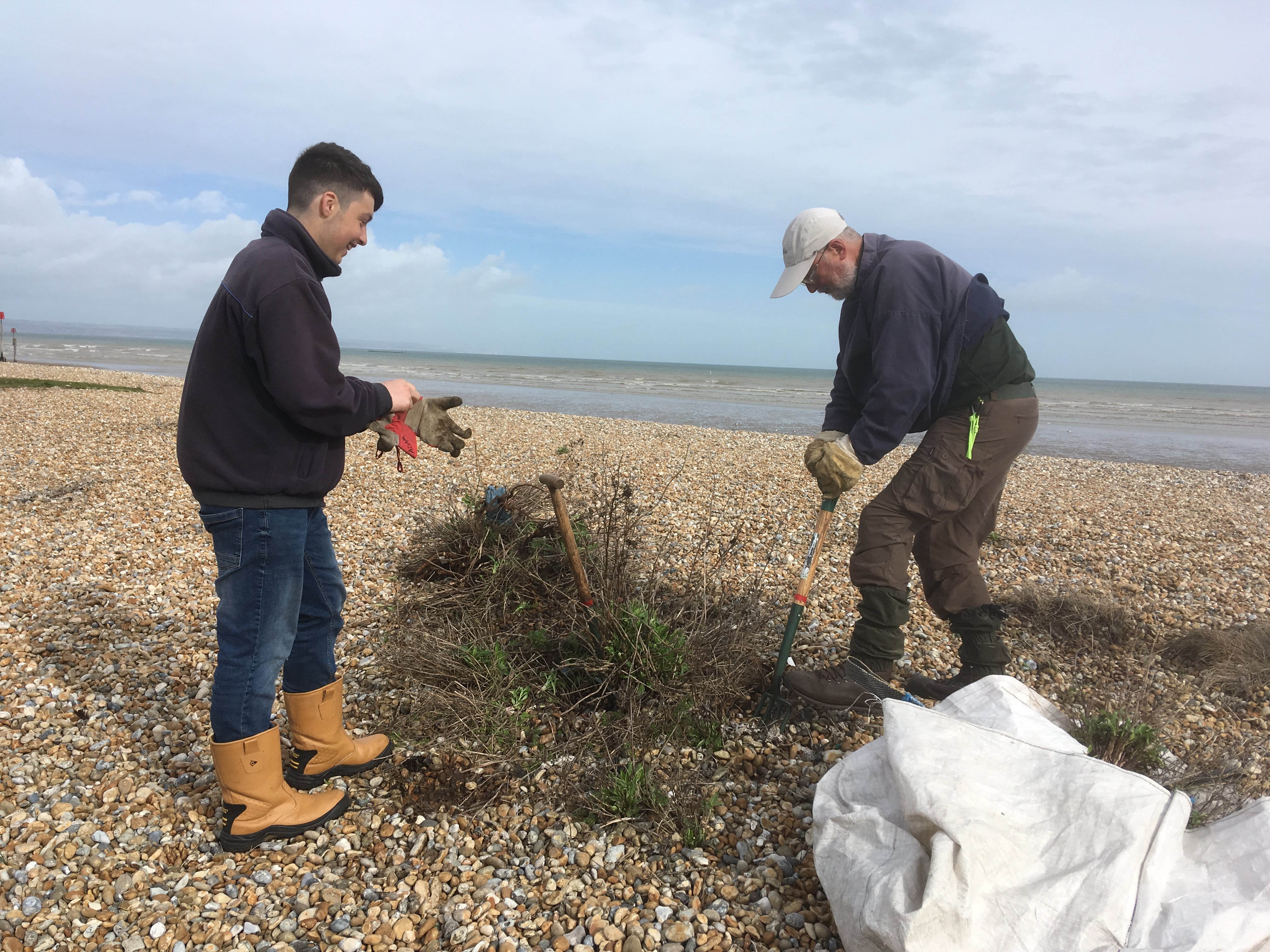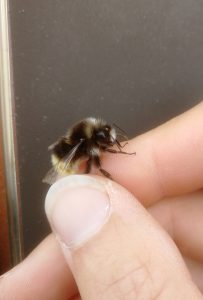March is the official start of spring and for anyone in the conservation industry, it is the official end of the cutting season, as we step back and allow the birds to start nesting. This year some signs of spring have sprung even earlier than normal, due to unexpectedly warm weather in February. As a result we have already seen butterflies, hoverflies and bees around on all of the sites we manage.
Working as a Ranger across the Marsh, our winters are spent cutting back scrub which tries to take over the ancient shingle ridges and occasional sand dune system. This scrub generally comes in the form of willow or bramble which quickly takes over if left unmanaged. These species given half-a-chance will quickly out-compete the more unusual plant species that we are lucky enough to find here, such as prostrate blackthorn and blue fleabane. In addition to this, the native plants growing on the Nature Reserves of the Marsh are also competing with invasive plants that have generally spread out from our back gardens. One such example of this is red valerian, which left unmanaged, quickly takes over on the shingle ridges of the Dungeness NNR.
Now that the spring has begun, it is time to get our surveying hats on and start to record the incredible diversity that we are lucky enough to have on our back door step. The Marsh is thriving with unique, and what elsewhere would be seen as rare, species such as: great white egret, which are now seen as ‘common’ by local birders on the gravel pits; the clouded yellow butterfly which can be seen darting across the sand dunes at Greatstone; the common porpoise which is a regular visitor along the coastline between Dungeness and Littlestone; and not forgetting the brown-banded carder bee, which can been seen around the Romney Marsh Visitor Centre. If you want to learn more about surveying the unusual wildlife that lives across the Marsh by joining us on some of our wildlife surveys, email us at: RMCP@dover.gov.uk and we can let you know what’s coming up.


